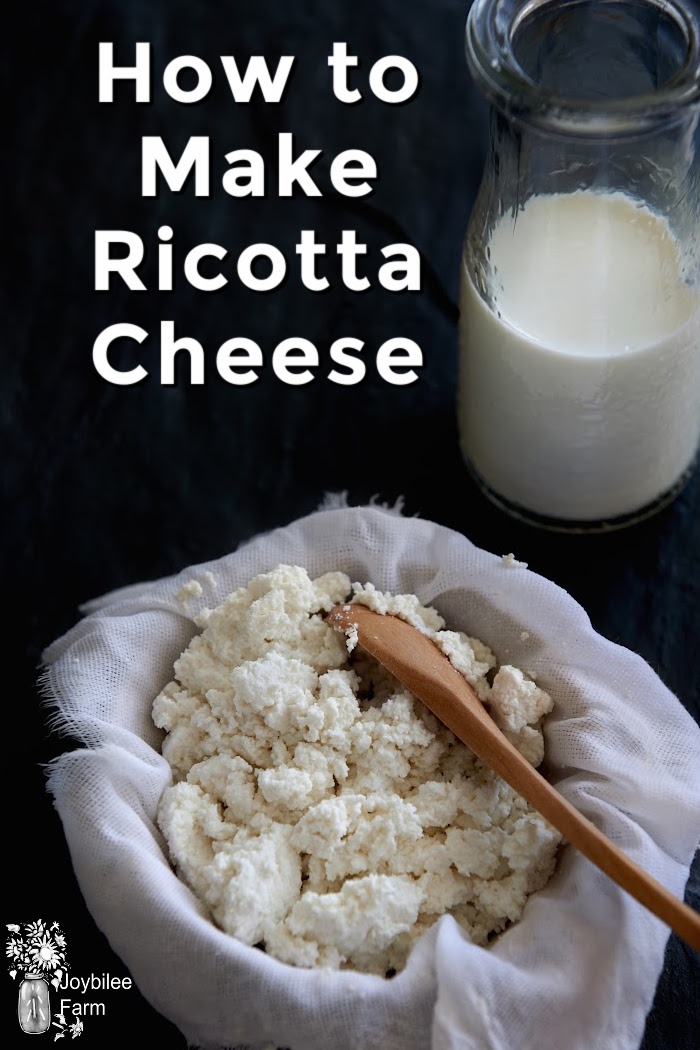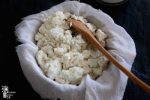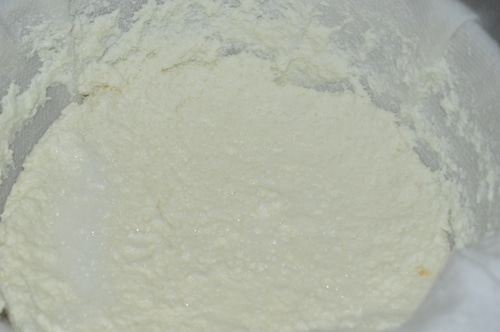How to Make Ricotta Cheese
Ricotta is a soft cheese made from the whey leftover after cheese making. Follow these step-by-step instructions and learn how to make ricotta cheese.

You’ve just made cheese the traditional way by culturing a gallon or two of milk with mesophilic or thermophilic culture. You’ve heated the curd and then strained the curds into a cloth and pressed out the whey. While you lost some of the whey down the sink, you still have a gallon or more of whey in the cheese pot. It looks too good to throw out. And it is.
Don’t waste that nutritious whey
It’s full of good probiotics right now and can be used to inoculate cultured vegetables or to preserve other foods, including meat or fish, by culturing.
Or you can learn how to make ricotta cheese with it. Ricotta is a soft cheese that is made by heating fresh whey leftover from cheese making, adding an acidifying agent like lemon juice or vinegar, and allowing the milk proteins to precipitate out of the liquid. Making ricotta destroys the probiotics in the whey and leaves only the milk sugars, so once you’ve finished making ricotta you can pour the cooled whey into your compost pile, feed it to your pigs or even use it as a stock for making bone broth.
Print
Ricotta Cheese
- Yield: 2 cups of ricotta cheese 1x
Description
Ricotta is a soft whey cheese that has a fine, moist, grainy texture
Ingredients
- 1 gallon of fresh whey, leftover from cheese making
- ½ cup lemon juice
- 1/2 teaspoon salt
Equipment:
- Cheese-making thermometer
- Cheesecloth
Instructions
- Heat the whey on the stove over medium heat until the whey reaches a temperature of 90C about 185F – Use a cheese-making thermometer
- Add 1/4 cup lemon juice (Fine curds will form and rise to the top of the whey)
- Continue heating for 10 minutes, stirring so that curds do not burn nor stick to the bottom
- Continue heating for 10 minutes while the curd precipitates out of the milk
- Line a colander with a cheesecloth
- Pour the whey through the cheesecloth and allow it to drain for a few hours or overnight (Once most of the whey is drained out of the ricotta you can speed the process by lifting the edges of the cheesecloth and twisting the top together to form a bag — sort of like a hobo’s pack. Let it drain overnight.)
- You can save the liquid if you place the colander over a clean container
- When curds have cooled and drained, mix in salt and refrigerate
Notes
- This ricotta cheese can be used in cheesecake recipes, as a filling for pasta, or in any recipe that calls for cottage or ricotta cheese.
- You can save the liquid if you place the colander over a clean container. It can be added to soup stock or animal feed.
How to make ricotta cheese
Recipe: Ricotta Cheese
Time: 1 hour
Yield: 2 cups of ricotta cheese
Ingredients:
1 gallon of fresh whey, leftover from cheese making
½ c. lemon juice
1/2 tsp. salt
Method:
Heat the pail of whey on the stove over medium heat until the whey reaches a temperature of 90C about 185F. Use a cheese-making thermometer. Add 1/4 c. lemon juice. Fine curds will form and rise to the top of the whey. Continue heating for 10 minutes, stirring so that curds do not burn nor stick to the bottom. Continue heating for 10 minutes while the curd precipitates out of the milk.

Line a colander with a cheesecloth (I use these gauze diapers purchased for cheese making). Pour the whey through the cheesecloth and allow it to drain for a few hours or overnight. Once most of the whey is drained out of the ricotta you can speed the process by lifting the edges of the cheesecloth and twisting the top together to form a bag — sort of like a hobo’s pack. Let it drain overnight.
You can save the liquid if you place the colander over a clean milk pail. It can be added to soup stock. It is a nourishing animal feed or it can be added to your compost pile. When curds have cooled and drained, mix in salt and refrigerate.
This ricotta cheese can be used in cheesecake recipes, as a filling for pasta, or in any recipe that calls for cottage cheese or ricotta cheese.
Try making these Maple Cheese Blintzes with Fig and Goji Berry Sauce.
Try this cheese-making kit and get started on this fascinating fermentation hobby. Grab this recipe book Home Cheese Making: Recipes for 75 Homemade Cheeses.
Here’s my recipe on How to Make Mizithra Cheese
Your Turn:
What cheese do you love that you want to learn how to make? Tell me in the comments and I’ll see if I can find an easy home version.



How much ricotta does this make? And can I use the whey left over from making mozzarella? It is not cultured, so would it react the same way to make ricotta?
Hi, Teresa
I do have a recipe. Its in my editorial list to publish in July. But here’s a brief run down. Take your milk. Add 1/4 cup. of kefir milk (not the kefir grains) for culure. Let it sit for an hour. Add 1/4 tsp. rennet in 1/4 c. cold water. Let it sit for 2 hours till it is solid. (Like cheese). Cut the curds. Wait another hour. (Sounds just like making cheese because up till this point it is). Warm the milk gently over low heat. Slowly bring the temp. up to 115F. Stir often to keep the curds from clumping together. Hold the temperature for 30 minutes. The curds are done when they lose their custard-like interior. Cook as long as necessary.
Drain curds in a cloth-lined colander (reserve the whey for ricotta or/and gjetost) When almost drained rinse the curds by dipping the bundle of curds into warm water several times. Drain for about 15 minutes. Then dip into cold water. Drain for 30 minutes. Add salt to taste.
If you’d like creamed cottage cheese, add cream at this point to get the desired consistency. Refrigerate.
Chris I love the emails and your web. It is a mine of information.
I make cottage cheese from fresh cows milk but would like a recipe/instructions to check whether I am doing it right. Do you have anything that would help?
Thankyou for all your lovely info. I’m going to try the why recipes next time I make the cheese.
Teresa